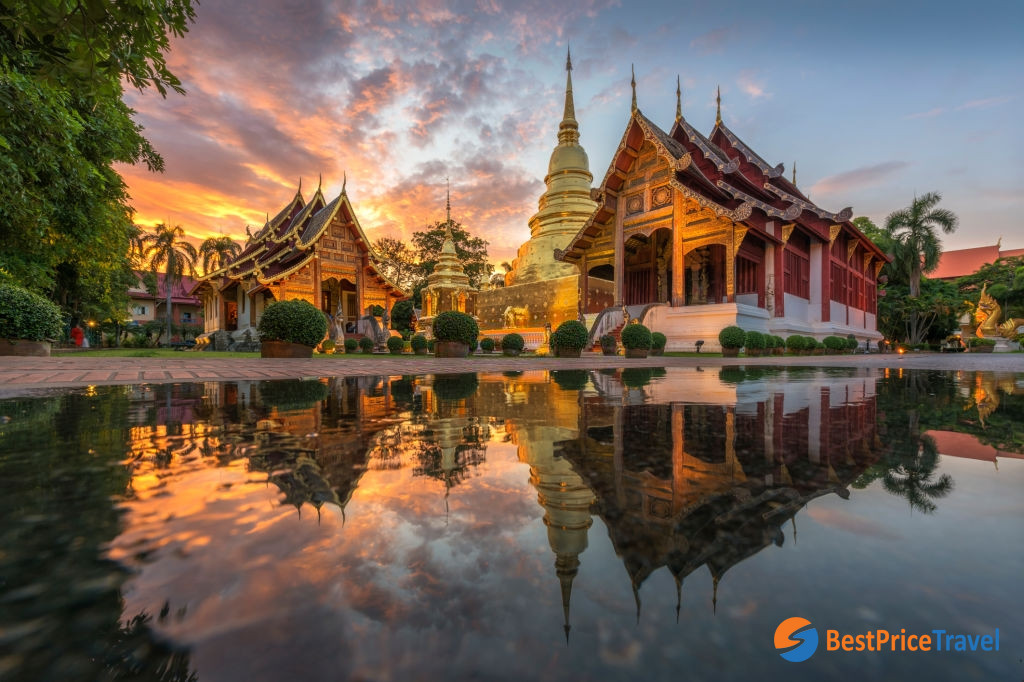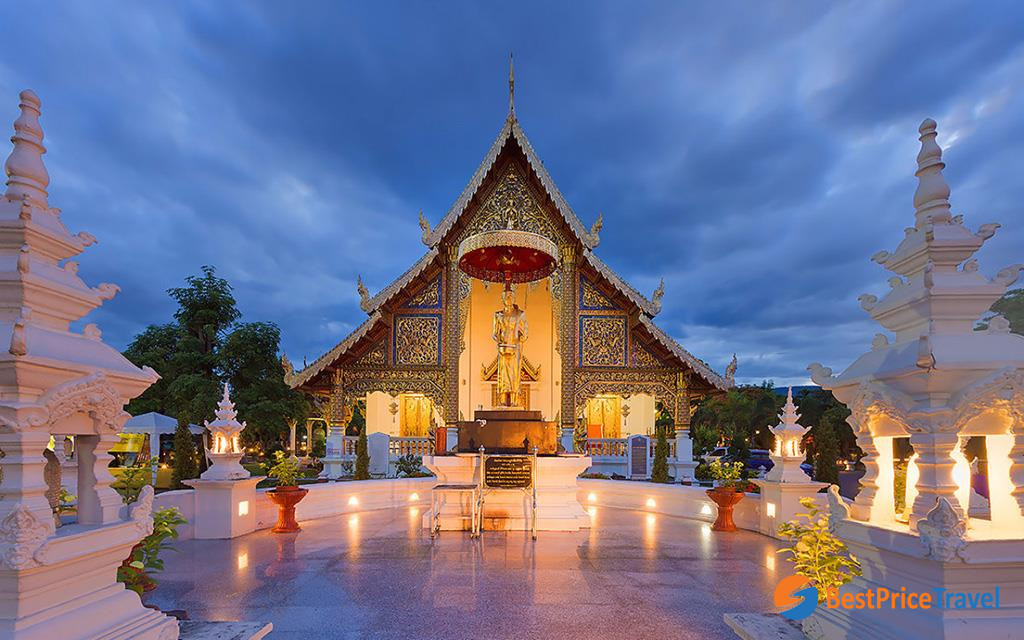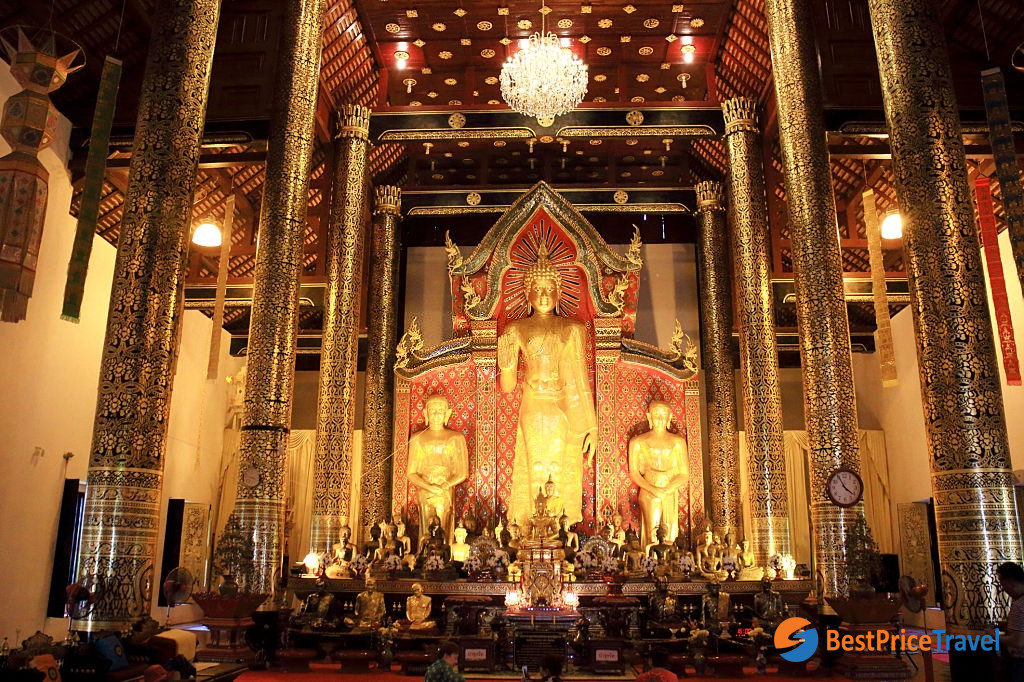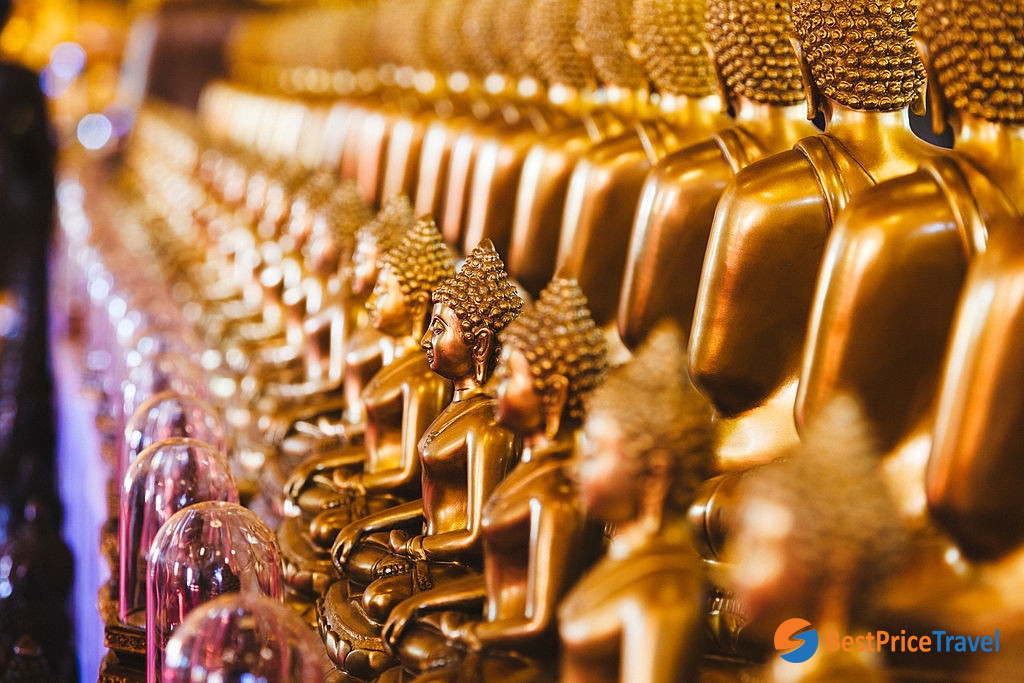Wat Phra Singh
Known as Chiang Mai's most revered temple, Wat Phra Singh has the prosperity of plaining to see from the lavish monastic buildings and trimmed grounds, dotted with massage pavilions and coffee stands. These pilgrims flock to venerate the famous Buddha image which is known as Lion Buddha (Phra Singh), housed in Wihan Lai Kham, a small chapel immediately south of the chedi (stupa) to the rear of the temple grounds.
Wat Phra Singh is seemed the second most venerated temple in Chiang Mai after Wat Phra That Doi Suthep. It houses three typical structures, the main attraction being the well decorated Lai Kam assembly hall. It restored murals depicting the lives of locals hundreds of years ago. Located inside the old wall of city, at the Western of Ratchadamnoen Road, the temple’s signature Lanna-style roofs and glittering viharn (assembly hall) attract visitors. The temple compound is really busy with many worshippers and visitors all of the year and is usually packed during the Thai New Year festival (called Songkran) in mid-April.

Wat Phra Singh features classical Lana architecture in Thailand
Wat Phra Singh was constructed in 1345 by King Pha Yu for the ashes of his father - King Kham Fu. It may have been the first monastery to house the Emerald Buddha, later resided in Wat Chedi Luang. And now, the Emerald Buddha is enshrined in Wat Phra Kaew, Bangkok. The temple is called for the Buddha image, it housed in 1367, the Phra Singh (Lion Buddha). The temple - monastery fell into the situation of disrepair as Chiang Mai's population declined in the 18th century but restoration started in the early 19th century under Chao Kawila. The work kept on under his successor, Chao Thammalangka commissioning the murals in Viharn Lai Kham. Wat Phra Singh is a major monastery and an important temple, housing 700 friendly monks who usually approach tourists to practice their English.

Wat Phra Singh
The largest building is Viharn Luang rebuilt in 1925 on the site of a 14th-century original and restored in the year of 2008. The three - aisled interior is impressive. It has high red roof supported by round white columns. It houses Phra Chao Thong Tip - a large image of the seated Buddha cast of gold and copper in 1477. A smaller hall, the beautiful Viharn Lai Kham (also called Gilded Hall), was built around 1345 and renovated in the early 19th century. It is known as a fine example of Lanna monastic architecture.
Inside the building is Phra Singh (Lion Buddha), an original 14th century treasure except for the head which was stolen in 1922. The walls are covered in murals illustrating Jataka tales and other stories. The wall behind the Buddhas and the round pillars are decorated in red-and-gold patterns. The opulent decoration on those gables consists of abstract mandala designs.

The interior of Wat Phra Singh

Wat Phra Singh
Inside is Buddha throne - An ornate ku. The little monastic library (in 1477) has a stone base to protect many precious manuscripts from pest and flooding. It is decorated with thewada (Buddhist spirit) and devata figures in high relief. There are also several chedis on the temple grounds, the largest one dating from 1345 and enlarged considerably since. One more thing interesting in this temple is that visitors do not need to charge for exploring Wat Phra Singh. The temple complex is open daily between 6 am and 8 pm.
